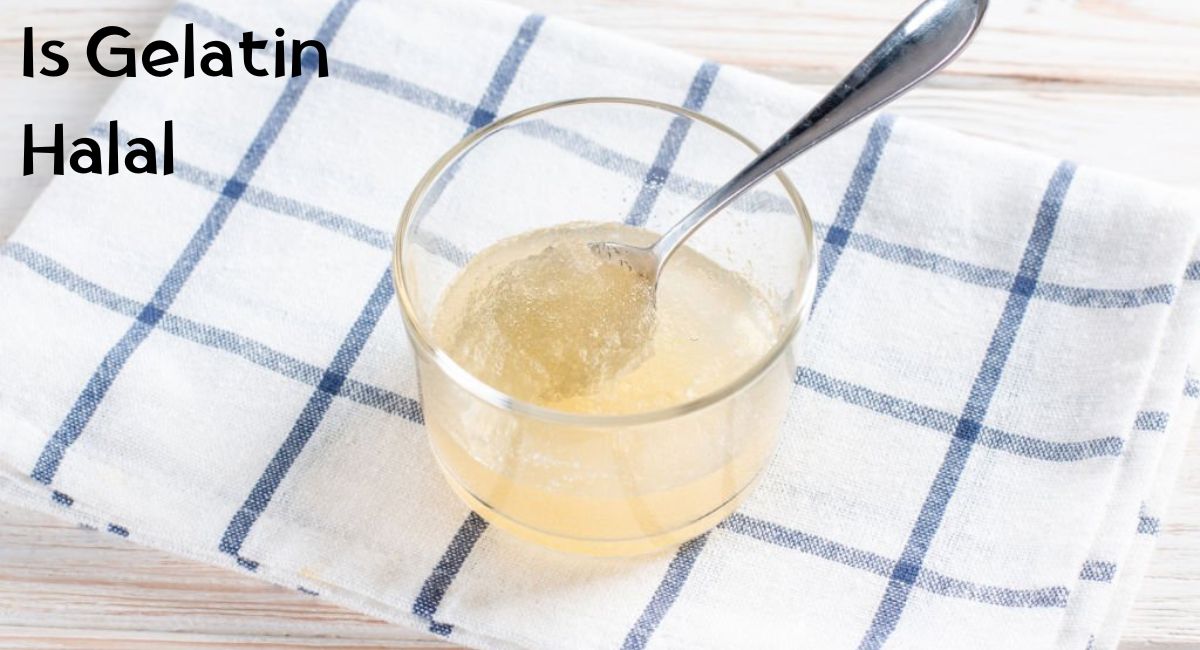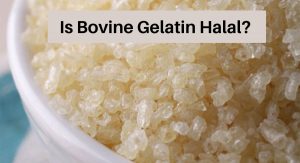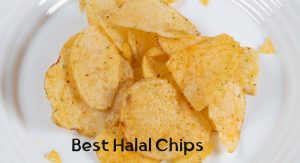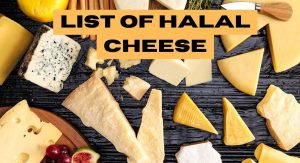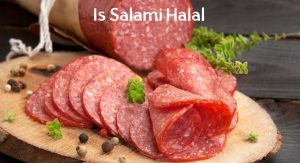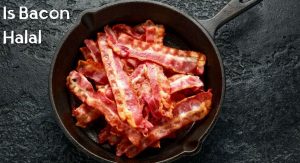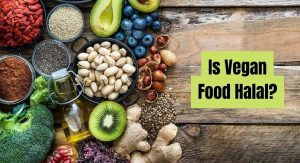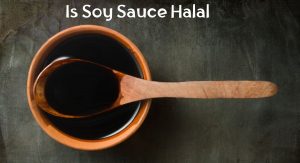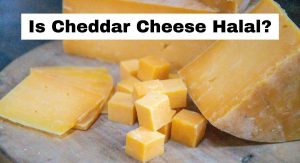Gelatin, a widely used ingredient in food, pharmaceuticals, and cosmetics, has garnered attention among individuals adhering to Halal dietary practices. With an increasing number of people seeking Halal-certified products, understanding the Halal status of gelatin has become essential. Gelatin, traditionally derived from animal sources such as bovine or porcine, undergoes a complex process of extraction and purification. However, due to the nature of its production, concerns have been raised regarding its compliance with Halal standards.
In this comprehensive guide, we delve into the intricacies of gelatin production, and the various Halal certification criteria, and explore potential alternatives for those seeking Halal gelatin options. Join us as we unravel the Halal status of gelatin and shed light on the choices available for individuals following Halal dietary guidelines.
What is Gelatin?
Gelatin, also known as gelatine, is a translucent, colorless, and flavorless food ingredient derived from collagen, which is taken from animal body parts. It is obtained by processing the bones, skin, tendons, ligaments, or cartilage of animals, such as cows or pigs, through a cooking and extraction process.
It is often used to make things like desserts, soups, sauces, and candies. It is a type of protein that comes from the collagen found in animal body parts like bones, skin, and connective tissue. When these animal parts are boiled, the collagen is extracted and turned into gelatin, which is a flavorless and colorless substance.
Gelatin has a unique property where it can become solid or “gel” when it cools down. This is why it is commonly used as a gelling agent in various food products. It is also rich in amino acids, which are important building blocks for proteins in our bodies. It may have some health benefits, such as supporting joint health and improving the appearance of skin and hair.
Types of Gelatin
Gelatin comes in different types based on various factors such as the source, processing methods, and intended applications. Here are some types of gelatin:
- Type A Gelatin: Type A gelatin is derived from collagen that is obtained mainly from pork skins through acid processing. It has an isoionic point of 6–9 and is commonly referred to as type A gelatin.
- Type B Gelatin: Type B gelatin is obtained from bones and animal skins using alkaline processing methods. It has an isoionic point of 5 and is often derived from beef skins. Type B gelatin is commonly known as type B gelatin.
- Gelling Gelatin: Gelling gelatin, also known as food-grade gelatin, is used in cooking and culinary applications. It has the ability to thicken and set ingredients, making it suitable for jellies, desserts, sauces, soups, and other similar food products.
- Non-Gelling Gelatin: Non-gelling gelatin, also called hydrolyzed collagen, is used in various industries such as pharmaceuticals and cosmetics. It has been processed differently, resulting in smaller-sized molecules and structures. Non-gelling gelatin is often used for its functional properties rather than its gelling ability.
Sources of Gelatin
Gelatin is primarily derived from animal sources, specifically collagen found in the skin, bones, and connective tissues of animals. Here are some common sources of gelatin:
- Animal Skins: Gelatin is often obtained from animal skins, such as pig skins and bovine hides. These sources provide a significant amount of collagen, which is then processed to extract gelatin.
- Animal Bones: Gelatin can also be derived from animal bones, including beef bones. The bones are processed to extract collagen, which is further hydrolyzed to produce gelatin.
- Animal Cartilage: Another potential source of gelatin is animal cartilage, which contains collagen. By hydrolyzing the collagen in cartilage, gelatin can be obtained.
- Fish: Gelatin can be derived from fish as well, particularly fish skin. The skins of certain fish species, such as cod, contain collagen that can be processed into gelatin.
How is Gelatin Made?

Gelatin is produced through a multi-stage process involving the hydrolysis of collagen, a protein found in animal tissues. Here is a comprehensive overview of how gelatin is made:
- Raw Material Selection: Gelatin production starts with the careful selection of raw materials. The primary sources of collagen for gelatin production are animal tissues such as pig skins, bovine hides, and bones. These materials are obtained from slaughterhouses and undergo thorough cleaning before further processing.
- Pretreatment: Depending on the raw material, either an acid or alkaline pretreatment process is employed. In the acid process, the raw material, usually pigskin, undergoes a conditioning process involving treatment with acid. In the alkaline process, bovine hides or ossein (bovine bone collagen) are treated with alkali for several weeks. This step prepares the collagen for extraction by transforming its structure.
- Extraction: After pretreatment, the materials are subjected to a warm water extraction process. This step involves treating the raw material with warm water to remove the gelatin from the collagen. The resulting gelatin solution is then filtered and purified to remove impurities and achieve the desired gelatin quality.
- Hydrolysis: Gelatin is obtained through the partial hydrolysis of collagen. During hydrolysis, the long protein chains of collagen are broken down into smaller peptides. This process involves the application of heat and enzymes to the gelatin solution. The hydrolyzed gelatin is soluble in warm water and possesses the desirable gelling and thickening properties.
- Filtration and Concentration: The hydrolyzed gelatin solution is filtered to remove any remaining impurities or solid particles. It may also undergo a concentration step to achieve the desired gelatin concentration or viscosity.
- Drying: Once the gelatin solution is purified and concentrated, it is dried to remove excess moisture and transform it into the desired gelatin form, such as sheets, granules, or powder. The drying process can be accomplished through various methods, including air drying, spray drying, or freeze drying.
The resulting gelatin product is then packaged and ready for various applications in the food industry, pharmaceuticals, cosmetics, and other fields. It is important to note that gelatin production follows strict hygiene and quality standards to ensure safety and meet regulatory requirements.
Is Gelatin Halal?
Determining the halal status of gelatin is a matter of debate among Islamic scholars, as it depends on the source of gelatin and the method of its extraction.
Gelatin derived from a halal source, such as cows or other halal animals, is considered halal (permissible). On the other hand, gelatin derived from haram sources, particularly pigs, is considered haram (forbidden) in Islamic dietary laws.
Islamic scholars and certification bodies have differing opinions regarding the transformation and permissibility of gelatin derived from haram sources. Some scholars argue that if gelatin undergoes a significant transformation, changing its original state and properties, it may be considered permissible even if it originates from haram sources. However, others maintain a cautious approach and consider gelatin from non-halal sources as impure and not permissible for consumption, regardless of any transformation.
Overall, the view that gelatin derived from impure substances is impermissible is more commonly held by contemporary scholars. Therefore, it is recommended to avoid gelatin derived from impure sources and opt for alternatives that come from animals slaughtered in the prescribed manner.
Halal Alternatives to Gelatin
There are several halal alternatives to gelatin that can be used in cooking and baking. Here are some options:
- Agar-agar: This is a jelly-like substance made from red algae that has been used for centuries in Asian cuisines. It has a gummy, chewy texture at room temperature and is a popular gelatin substitute because it involves no animal products. Agar-agar is considered halal and pareve.
- Pectin: This is a plant-based substance that is usually derived from apples and citrus fruits. It is available as a powder or flakes and is used as a thickening, gelling, and stabilizing agent. Compared to gelatin, pectin is more gummy and syrup-like. Pectin needs to be boiled in order to gel, and there isn’t an exact substitution ratio, so it’s best to follow the recipe’s directions.
- Carrageenan: This is a vegan gel that is a type of product, rather than a single ingredient. Depending on the brand, it may contain ingredients like vegetable gum, carrageenan, and tapioca dextrin. Usually, store-bought vegan jel is used as a thickener, gelling, and stabilizing agent.
- Kudzu: This is a root starch that is often used in traditional Chinese medicine. It is a good substitute for gelatin in recipes that require a thickening agent. Kudzu is usually available as a powder or flakes and can be used in a 1:1 ratio with gelatin.
- Vegan Jel: This is a plant-based gelatin substitute that is made from vegetable gum, carrageenan, and tapioca dextrin. It is a popular option for vegans and vegetarians who want to avoid animal products. Vegan Jel is usually available as a powder and can be used in a 1:1 ratio with gelatin.
- Tapioca Starch: Tapioca starch is a fine white powder extracted from the cassava root. It is often used as a thickening agent in recipes and can provide a similar texture to gelatin when used in appropriate proportions. Tapioca starch can be used in puddings, pies, and other desserts as a gelatin substitute.
- Arrowroot Powder: Arrowroot powder is derived from the rhizomes of several tropical plants. It is a gluten-free starch that can be used as a thickening agent in cooking and baking. Arrowroot powder can be used in place of gelatin to thicken sauces, gravies, and other dishes.
- Xanthan Gum: Xanthan gum is a polysaccharide commonly used as a thickener and stabilizer in food products. It can mimic the gelling properties of gelatin and is often used as a vegan alternative. Xanthan gum is commonly used in gluten-free baking to improve the texture and structure of baked goods.
It’s important to note that some products may be labeled as halal or kosher, but it’s always best to check the ingredients list to make sure. Additionally, some halal and kosher gelatins may still contain animal products, so it’s important to do research and read labels carefully.
Is Gelatin Good for Health?
Gelatin has been associated with various health benefits. However, it’s important to note that scientific evidence supporting these claims is limited. Here are some insights on the potential benefits and considerations regarding gelatin:
- Joint Health: Gelatin contains amino acids that are important for maintaining joint health and may help improve symptoms of osteoarthritis. Collagen in gelatin provides structural support to joints, but more research is needed to establish its efficacy.
- Skin and Hair Health: The amino acids in gelatin are essential for skin health and may contribute to improved skin elasticity and the growth of strong, healthy hair. However, the evidence supporting these benefits is limited, and more research is necessary.
- Digestive Health: Gelatin has been used traditionally to support digestive health. It may help soothe and heal the gut lining, promote healthy digestion, and aid in managing certain digestive disorders. However, more scientific research is needed to confirm these benefits.
- Weight Management: Gelatin is a protein-rich food that may help increase satiety and promote feelings of fullness, potentially aiding in weight management. However, its impact on weight loss or maintenance is not well-established, and it should be consumed as part of a balanced diet.
- Nail Health: Some anecdotal evidence suggests that gelatin may improve nail strength and reduce brittleness. However, more scientific studies are needed to confirm this benefit.
- Other Potential Benefits: Gelatin has been associated with a range of other potential benefits, including improved sleep, muscle growth, bone health, and immune support. However, further research is required to validate these claims.
It’s important to consider that gelatin is derived from animal sources, making it unsuitable for vegetarians and vegans. Additionally, gelatin products may contain additives or be processed differently, which could affect their nutritional profile and potential health benefits. As with any dietary component, moderation is key, and it’s advisable to consult with a healthcare professional before making significant changes to your diet or using gelatin for specific health purposes.
Gain a thorough understanding of the halal implications of various gelatin types by exploring these comprehensive guides. Make informed choices about your dietary preferences today.
Is Beef Gelatin Haram: Dive into the world of halal dietary choices with our article on whether beef gelatin is permissible according to Islamic dietary guidelines. Uncover the truth about this controversial topic.
Is Bovine Gelatin Haram: Discover the halal or haram status of bovine gelatin in this insightful article. Get clarity on the source and processes involved, helping you make informed dietary decisions.
Is Kosher Gelatin Halal or Haram: Delve into the intersection of kosher and halal dietary standards with our article on kosher gelatin. Learn whether it meets the requirements for halal consumption in this informative piece.
Frequently Asked Questions
1. Is bovine gelatin halal?
Bovine gelatin refers to gelatin derived from cattle, and its halal status is similar to that of beef gelatin. If the bovine gelatin is sourced from cattle that have been slaughtered according to Islamic Shariah rules, it is considered halal for consumption. It is important to ensure that the gelatin is derived from permissible sources and that the slaughtering process adheres to halal guidelines.
2. Is kosher gelatin halal?
Kosher gelatin refers to gelatin that meets the dietary requirements of Judaism. While kosher gelatin may be permissible for Jews to consume, its halal status for Muslims depends on additional factors. According to Halal Guidance, kosher gelatin can be halal for Muslims to eat if the source of the gelatin is not forbidden in Islam and if the animal was slaughtered by “ahl-il-kitab” (Muslim or Jew) following similar slaughtering guidelines as Muslims. It is essential to ensure that the gelatin complies with halal requirements and that it is not derived from forbidden sources.
3. Is fish gelatin halal?
Fish gelatin is generally considered halal and permissible for Muslims to consume. Gelatin derived from fish does not have the same concerns as gelatin derived from animals such as pigs. However, it is always advisable to ensure that the fish gelatin is sourced from permissible fish and processed in a manner that complies with halal guidelines.
4. Is beef gelatin halal?
Beef gelatin is generally considered halal for consumption by Muslims, provided it is sourced from cattle that have been slaughtered according to Islamic Shariah rules. It is derived from the collagen of bovine animals and is commonly used as a food additive in various products, including desserts, chewy sweets, and marshmallows. However, it is important to ensure that the beef used for gelatin production follows the proper halal slaughtering guidelines.
Is Beef Gelatin From Turkey Halal?
Yes, because Turkey is a halal bird, and Gelatin derived from a halal source is also halal.
Why Gelatin is Haram?
Gelatin derived from haram sources, especially from pigs, is unequivocally and absolutely forbidden (haram) according to the strict and unwavering tenets of Islamic dietary laws. The consumption of gelatin obtained from such impure and prohibited sources is entirely reprehensible and entirely incompatible with the deeply ingrained principles that govern the dietary choices of devout Muslims.
